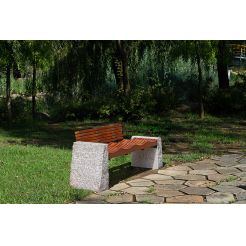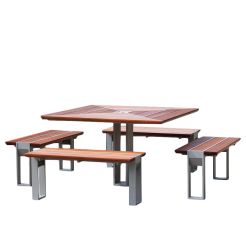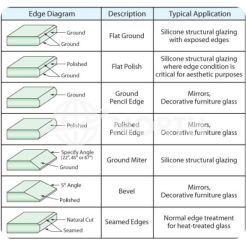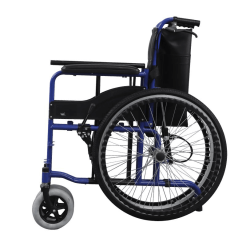Combine harvester 4LZ-13 Manufacturer
With a working width of up to 5.4 meters and a feed rate of 13 kg/s, taking a standard block of 200 meters in length as an example, 3.2 acres can be easily harvested in one round trip, and 40 acres of wheat can be harvested in one hour.
Product Description
Combine harvester 4LZ-13
Advantage:
1.5.4 meters of working width, 13 kg/s feeding amount, high working effect.
2.With 260 horsepower engine, four working gears can be adjusted,can choose different power output according to the different crops to be harvested, saving energy and fuel.
3.Stable four-wheel drive structure, comfortable control, strong bearing capacity, good passability, sand, mud, slippery adaptability.
4.The longitudinal layout of the threshing drum has higher threshing performance and lower crushing rate. Eight convenient type can be quickly replaced gravure screen, to achieve a multi-purpose machine.
Technical Specification:
|
Model Number |
4LZ-13 |
|
Structural Form |
Self-propelled wheel type |
|
Engine Form |
Six-cylinder |
|
Cylinder Number |
6 |
|
Rated Power (KW) |
191 |
|
Rated Speed (r/min) |
2200 |
|
Size (mm) |
L9450*W5800*H3850 |
|
Weight (kg) |
12500 |
|
Min Ground Clearance (mm) |
430 |
|
Drive Mode |
4DW 2WD |
|
Operating Speed (km/h) |
1.5-6.0 |
|
Operating productivity (hm2/h) |
0.6-1.5 |
|
Operational fuel consumption (kg/hm2) |
≤35 |
|
Header Width (mm) |
2300 |
|
Feeding in speed (kg/s) |
13 |
|
Cutter type |
National standard Ⅱ |
|
Cutting table auger type |
Spiral gear |
|
Reel paddle diameter (mm) |
1130 |
|
Reel Paddle plate number |
6 |
|
Threshing Cylinder Size (Outside diameter x Length) |
610*2995 |
|
Escape Grid Form |
Hurdle Scrubber |
|
Blower Diameter (mm) |
296 |
|
Wheel Base (mm) |
3305 |
|
Transmission type |
Mechanical transmission+hydrostatic CVT |
|
Transmission Gear |
4 |
|
Drive type |
Hydrostatic drive/mechanical drive |
|
Grain Tank Capacity (m3) |
10 |
Key points for use:
1. If you are not clear about the working principle and operation requirements of the combine harvester, it will be difficult to use the combine harvester well. Therefore, you must participate in the operation training of the combine harvester before using the machine.
2. Be sure to read the product manual in detail before using it. Because the combine harvester has a complex structure, although the machine is of good quality, if you use it casually based on experience without understanding the internal structure and how to use it, and do not operate it according to the provisions of the manual, the machine will easily have unnecessary failures.
3. Because the conditions of the harvested crops vary greatly (such as crop varieties, maturity, moisture content, yield, crop height and lodging conditions, etc.), during the use of the combine harvester, the various relevant mechanisms of the machine should be adjusted in time according to the changes in crop conditions to ensure the operating performance of the combine harvester.
4. The safety protection device installed on the combine harvester is set to protect the safety of the operator and related personnel. Therefore, it cannot be disassembled when the machine is running or working. If it has been disassembled during maintenance, it must be reinstalled before the machine is running or working. In addition, when the machine is operating, it must be carried out in accordance with the requirements of the relevant safety warning signs to avoid accidents.
5. The combine harvester should be inspected, maintained and serviced regularly and timely. For example, check whether it is lacking in oil, water, looseness, open welding, abnormal noise, etc. If there is any abnormality, it should be supplemented, adjusted and repaired in time. The machine should not be allowed to work with illness, otherwise it is easy to cause major failures or damage.
6. In most cases, the structure and parameters of the combine harvester are coordinated in design and cannot be changed or modified at will. For example, increasing the engine speed, increasing the height of the grain box, etc., not only can the operating performance not be guaranteed, but also accelerate the wear and damage of the machine.
7. New machines or harvesters after maintenance must be tested and run-in.
① Engine test run. According to the inspection and maintenance content, decide on cold and hot running and running-in, check whether the oil pressure gauge, oil temperature gauge, and water temperature gauge are normal, and whether there is oil leakage, water seepage, and abnormal noise.
② Walking test run. You can turn left and right in the order of 1st gear, 2nd gear, 3rd gear, and reverse gear, and check whether the steering mechanism and brake are sensitive and whether the clutch interlocking mechanism is reliable.
③ Test run the working mechanisms such as cutting, threshing, separation, and grain unloading, and check the reliability and sensitivity of the monitoring instruments.
8. Clean, inspect, tighten, adjust, lubricate, add and replace vulnerable parts of the combine harvester regularly.
① Clean the combine harvester, remove the husks, broken stems and other attachments on the machine, lubricate all friction parts in time, clean the outer chain and lubricate with engine oil.
② Check the technical status of the engine, including whether the oil pressure, oil temperature, water temperature are normal, whether the engine sound and fuel consumption are normal, etc.
③ Check and adjust the harvesting platform, including the speed and height of the reel, the cutter stroke and cutting gap, the gap between the auger and the bottom surface, and the auger speed.
④ Check the threshing device. Mainly, the gap between the drum speed and the concave plate should meet the requirements. The higher the speed, the smaller the gap, but it should not cause grain crushing and drum clogging.
⑤ Inspection of separation device and cleaning device. Inspection of the draft remover should be based on whether the crankshaft rotates flexibly after tightening. The axial flow drum separation device mainly checks whether the drum rotates lightly, flexibly and reliably.
⑥ Inspection of other items. Check whether there are cracks in the welded parts, whether all kinds of oil and water are clean and sufficient, whether the fasteners are firm, whether the movement of the rotating parts is flexible and reliable, whether the operating device is flexible, accurate and reliable, especially the hydraulic operating mechanism, which must be accurate when used.
9. Operation according to specifications can reduce failures and improve efficiency.
① Start the engine without load, engage the clutch at low speed, pull the control valve to slow down the combine harvester, lower the harvesting platform to the normal cutting height, increase the throttle, and enter the area for harvesting when the engine reaches the rated speed.
② After the harvester runs for 50-100 meters, stop and check the operation quality. Make necessary adjustments when necessary until the operation quality meets the requirements and put it into normal operation.
③ Always use high throttle for operation. Do not reduce the throttle to reduce the forward speed, because the smaller the throttle, the slower the movement rhythm of the working mechanisms of the harvesting and threshing parts of the harvester, which may reduce the quality of operation and even block the harvesting platform or roller. Do not shut down the machine immediately after high throttle operation.
④ The speed can be changed by operating the valve and shifting gears during operation.
⑤ The height of the harvesting platform should be adjusted in time when crossing obstacles.
⑥ Normal temperature specifications, speed specifications and load specifications should be maintained during use.
10. Ensure the integrity of the combine harvester by keeping it idle.
① Remove dust and dirt, open all windows, covers and shields of the unit, and carefully remove grass clippings, broken straw and oil stains from all parts of the machine to make the unit clean.
② Remove the chain, clean it with diesel, immerse it in engine oil for 20 minutes, wrap it with paper and store it separately; remove the tape, clean it and dry it, apply talcum powder, and keep it properly.
③Replace the lubricating oil in each part, and then rotate it a few times without load.
④Apply oil to the working friction parts or paint stripping parts to prevent rust.
⑤Brush the outside of the machine with water, and apply a small amount of lubricating oil with a rag after drying.
⑥After the machine is put into storage, lower the harvesting platform and place it on the pads, lift the driving wheel bridge and steering wheel bridge with a jack and pad the pads, place the machine body stably and the tires off the ground, and reduce the tire pressure to 1/3 of the standard pressure.
⑦Relax the safety clutch spring and other springs.
⑧During the storage period, regularly rotate the crankshaft 10 times, and turn the hydraulic distribution valve 15-20 times in each working position every month. To prevent the working surface of the cylinder piston from rusting, the piston should be pushed to the bottom.
⑨The engine and livestock battery should be kept according to their respective technical storage regulations.









